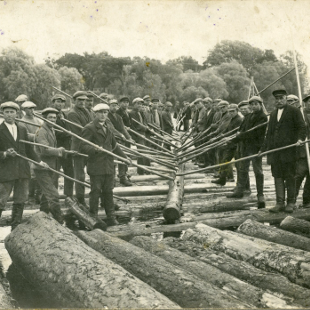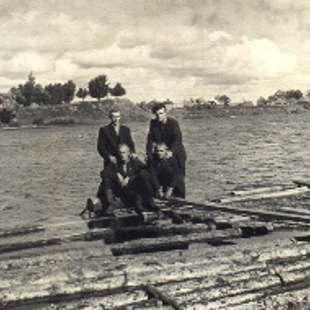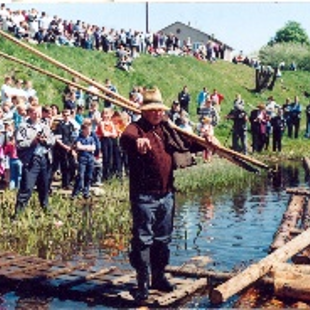
164 Latvian small and large rivers were used for driving logs. The total length was 5 000 km. The main ways to drive the logs down the rivers were using rafts and loose log driving. The conversational dictionary contains a fact that in the year of 1907, 60 000 rafters, 13 000 logs and 4 000 m3 of firewood was sent from Salacgriva to Riga and Pärnu.
The main export goods then were rafters (railroad ties) that were prepared on the spot of felling with special broad axes. This how a special profession occurred – rafter carpenter. A debarked fir-tree firewood was also procured and driven the same way.
This continued up to the Soviet occupation times when the amount of the driven logs increased but that was only true for the loose logs. The rafts were used only for the water gardens on the Salaca as well as for the protection of the bridge and avoiding the clogging of the river.
The rafts were made in the lower part of the river and on the seashore and then they were dragged by the tug to Riga.


